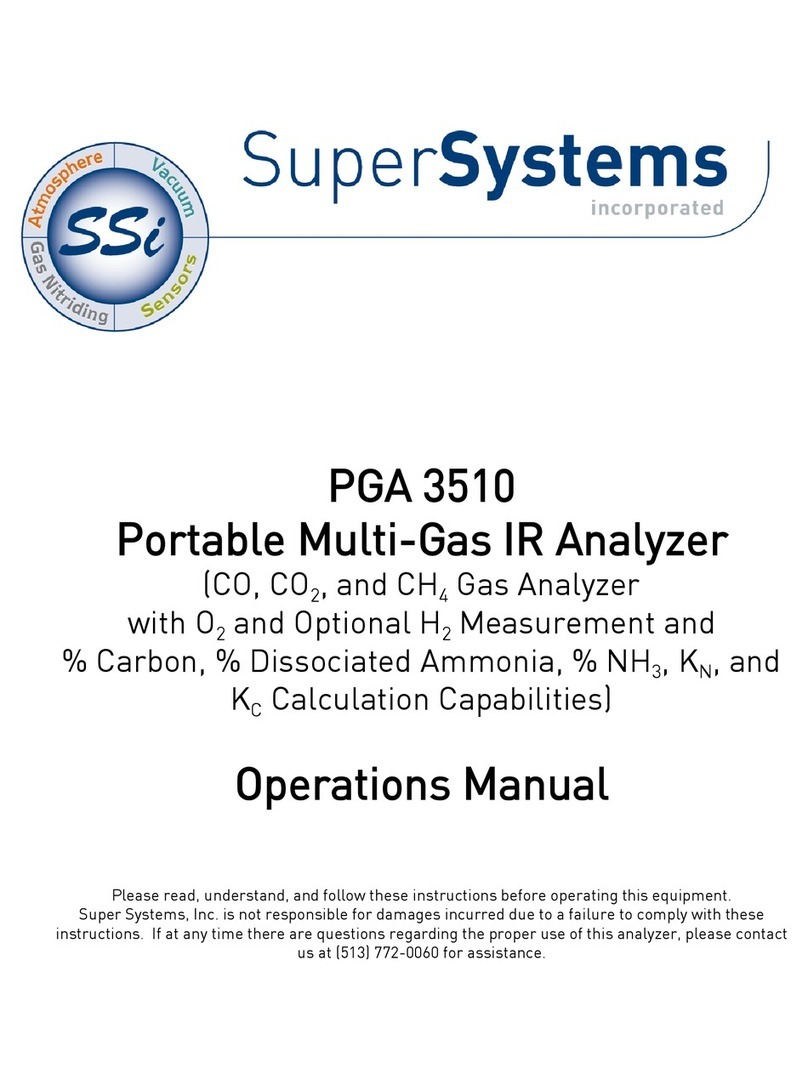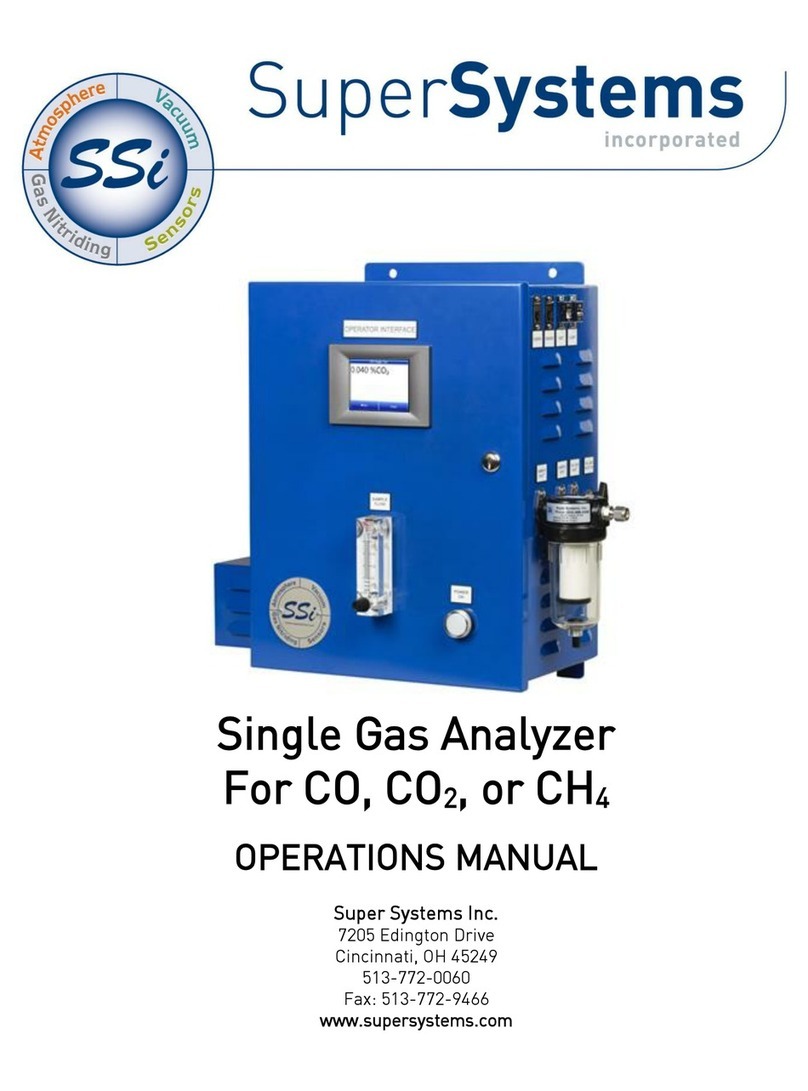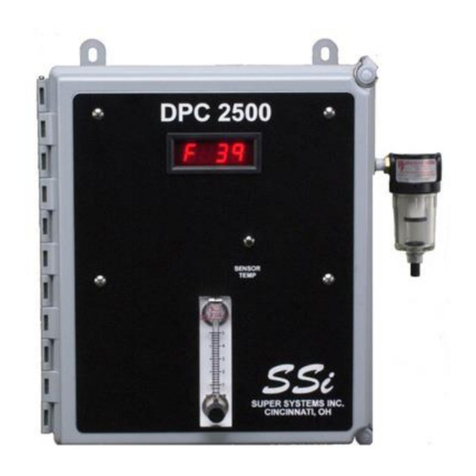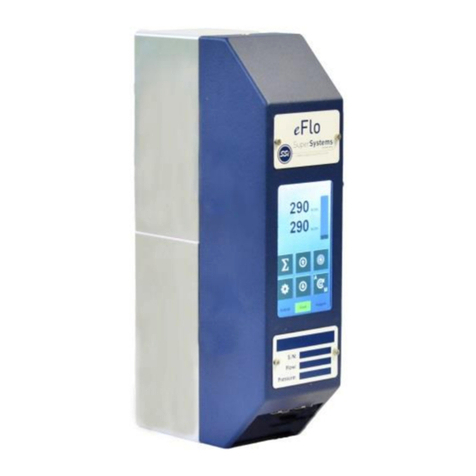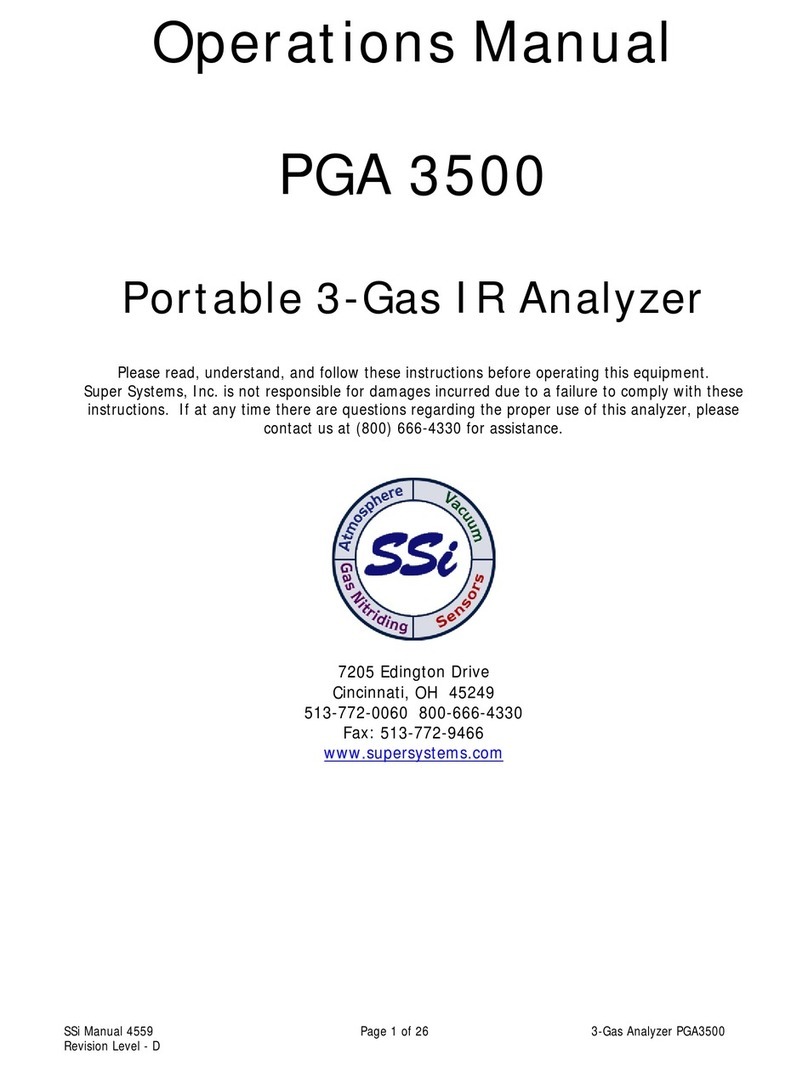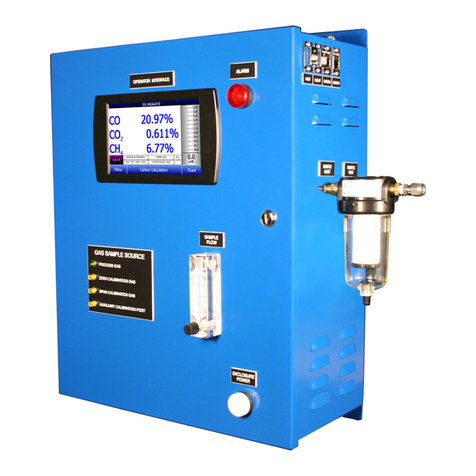DP2000 Portable Dew Point Analyzer Operations Manual
Super Systems Inc. Page # 9 of 30
increase the life of the filter. Furnace ports can be burned off by pumping air
through them while hot, or by removing them from the heat and mechanically
cleaning them. Generator ports should be opened before the instrument is
attached to allow any particulate buildup to be blown out. It is also helpful to tap
on the port while it is being blown out to eject any loose particles before the
instrument is attached.
If soot is allowed to collect on the dew point sensor in the instrument, it could
result in higher readings. This soot will also retain moisture than can corrode
the sensor over time. The sensor tip can be cleaned by carefully removing it
from the sample block (see Section 2.3 of the Field Calibration instructions) and
rinsing it in isopropyl alcohol. The power should be off while this is done, and the
power should remain off for at least 30 minutes after this procedure to allow all
of the alcohol to completely evaporate.
Water / Moisture Contamination
When a furnace or generator is being started up or cooled down, the resulting
gas will contain unusually high amounts of carbon dioxide and water. When the
gas cool, moisture will precipitate out and become condensation inside the
sample tubing assembly. Even if the furnace or generator is operating normally,
residual moisture may still be present in the sample tube or plumbing system.
In the same way that the ports are checked for soot (see above) they should be
checked for moisture before attaching the instrument. This is especially
important when taking a sample from a generator, since the sample port is
usually preceded by a significant amount of plumbing. All traces of moisture
should be eliminated before attaching the instrument. Failure to do so will result
in erroneous measurements and could result in damage to the analyzer.
The first signs of moisture in the instrument will be visible condensation in the
sample tubing and an unusually high dew point. The upper range of the sensor is
+80°F (27°C), so if that value is displayed on the instrument it is probably due to
the presence of moisture. If this moisture is not removed, it will cause the
sensor tip to corrode and will eventually require the sensor to be replaced.
To remove moisture from the instrument, the sample tubing and filter should be
removed from the instrument since they will probably be wet. A dry and inert gas
such as nitrogen or argon should then be flowed through the instrument (with
the pump off) for as much time as it takes to dry out. This dry-out time will
depend on the amount of moisture present in the instrument. The condition of
the sensor can be monitored by periodically reading the dew point from the
display and watching the value decrease over time. To test if it is operating
properly, verify the ambient dew point against a web-based weather station that
will report the ambient dew point for your area. If the displayed reading is within












